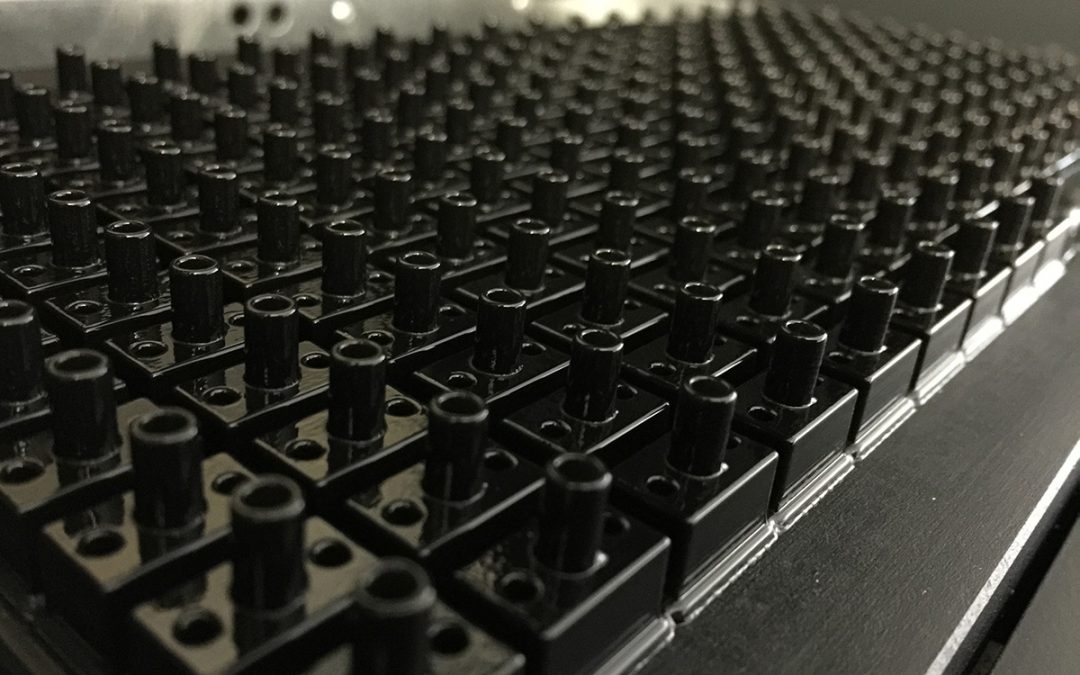In recent years, 3D printing has become the buzzword when it comes to new product testing and rapid manufacturing. Watch any interview with an aspiring product designer or manufacturer and you’ll probably hear them talk about how 3D printing has revolutionised their prototyping process.
After all, 3D printing is quick, relatively inexpensive and highly customisable. However, there are limitations to it too – most notably quality and durability. So, is 3D printing really the future of the manufacturing process?
3D printing terminology
The terminology surrounding 3D printing is evolving almost as fast as the technology itself. 3D printing, additive manufacturing and rapid prototyping are all phrases that generally refer to the same thing, but the exact definitions differ slightly based on the application of the technology:
- 3D printing – this has become a household term since the widespread introduction of home 3D printers. 3D printing is a colloquial term for the process of synthesising a three-dimensional object – the industry standard term is ‘additive manufacturing’.
- Additive manufacturing – the technology of building 3D objects by adding layer-upon-layer. The term is often used to refer to specialist manufacturing processes for the automotive and aerospace industries where complex, rare or product-specific parts can’t be made any other way.
- Rapid prototyping – the process of using three-dimensional CAD (computer aided design) data to quickly create a scale model of a physical part. Used to make one-off test versions of a product or part in design and engineering industries.
Home 3D printers vs. industrial models
In this article, we’re focusing entirely on industrial 3D printers rather than use-at-home products. This is because the low-cost home versions are in no way comparable to professional models: they’re not accurate, repeatable or reliable.
After all, how can you compare a £200 machine to one that costs £250,000? The speed, build size, available materials and quality vary dramatically between these two extremes.
Is 3D printing a cost effective manufacturing option?
In manufacturing, the material used to create a particular part can make-or-break it in terms of its suitability for the final product. Professional 3D printers are designed to print using resins, plastic filaments, plastic powders, ceramic powders and even metal powders. This gives a high level of flexibility to the prototyping process.
When creating 3D printed parts, the cost per part is mostly time driven: design time, build time and post-process time (removing support materials and sanding/cleaning supports away using air or water jets). Build times can vary from minutes to days depending on the size of the item being created, as well as the exact process you require and the number of parts needed to craft the final design.
When comparing the cost of additive manufacturing to other traditional manufacturing techniques such as injection moulding, the part and tooling costs of the moulding process are compared to the sole part cost of the 3D printed method. This is because there is no tooling cost in additive manufacturing.
The cost is dependent on the number of parts that you require, as well as whether you need small or large quantities. If you require small batches without large up-front costs, additive manufacturing could be the better option. Similarly, 3D printing is usually more cost effective for highly bespoke products which are all different, or for those which change regularly.
In lower volumes, additive manufacturing is often the more cost effective choice, however this works on a sliding scale. For example, 10 units at £50 each on a 3D printer is better than 1000 injection moulded units at £0.20 each with £10,000 spent on tooling costs. Yet injection moulding soon becomes the cheaper option when you start upping the quantity of products.
Product quantity probably only has to reach around 10-20 before injection moulding becomes more cost effective. However, there are lots of variables to consider, such as the shape and complexity of the part. That being said, even highly complex parts can still be better suited to 3D printing – for example, parts for Formula 1 engines or lightweight parts to go on planes. These are highly specialised, critical parts produced in low volume, hence it is more feasible to print them.
3D printing manufacturing processes
There are various different processes and methods involved in 3D printing. The most common technologies are explained below:
- FDM (Fused deposition modelling) – an additive manufacturing process whereby a nozzle ejects molten material which is built up in layers
- SLA (Stereolithography) – an additive manufacturing process that uses photopolymerization (light causes chains of molecules to link together, forming polymers)
- Polyjet – a printing process where printers have two or more jetting heads that build up the product by spraying layer-upon-layer of material
- SLS (Selective laser sintering) – an additive manufacturing technique which uses lasers to bind powdered material together which is then built up in layers
- DMLS (Direct metal last sintering) – this works in a similar way to SLS
- Colorjet – standard inkjet printing technology is used to crate 3D parts layer by layer by combining powder with a liquid binder
Cost and production rates of 3D printing
Professional grade machines start at around £30K and go up to seven figures. Materials can cost hundreds or thousands per kilogram, depending on which material you select.
Depending on the printer style, process and material type, printers can produce up to around 25mm per hour, although some methods take much longer.
In terms of manufacturing, 3D printing is really only suitable for low volume or highly specialised applications.
Taking into account the cost to purchase or hire a printer, it’s often more suitable to use an inject mould for manufacturing parts or products, particularly when they need to be produced in bulk. Injection moulds can produce items much faster which cuts down your production time.
The limitations of 3D printing
The durability and quality of 3D printed parts is often brought into question. They tend to either have a great surface finish and lack durability, or have high durability and a poor surface finish. This is true od even the best 3D printed products created on the highest specification models.
Conversely, injection moulded parts can have both high finishes and extreme durability. This combination means that they are often better suited for manufacturing purposes. The accuracy of injection moulded parts is more reliable as the finished items will always match the moulds, whereas 3D printed parts can be subject to small differences between batches.
3D printing: the future of manufacturing?
3D printing can be a highly effective option for prototyping parts and testing new product ideas. Similarly, it can be a cost effective option for highly specialised parts that will only ever be required in small quantity.
However, as it stands today, 3D printing is probably not the future of manufacturing as a whole. In an industry where speed, quality and uniformity are key, additive manufacturing still has a way to go before they can live up to the standards of injection moulding.
This status quo may very well change in the future as the technology is developed and printing processes are refined. If machine and material costs drop but production times and accuracy increase, it may very well be that one-day 3D printing is considered the best product manufacturing option. Only time will tell.

